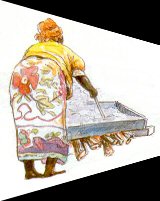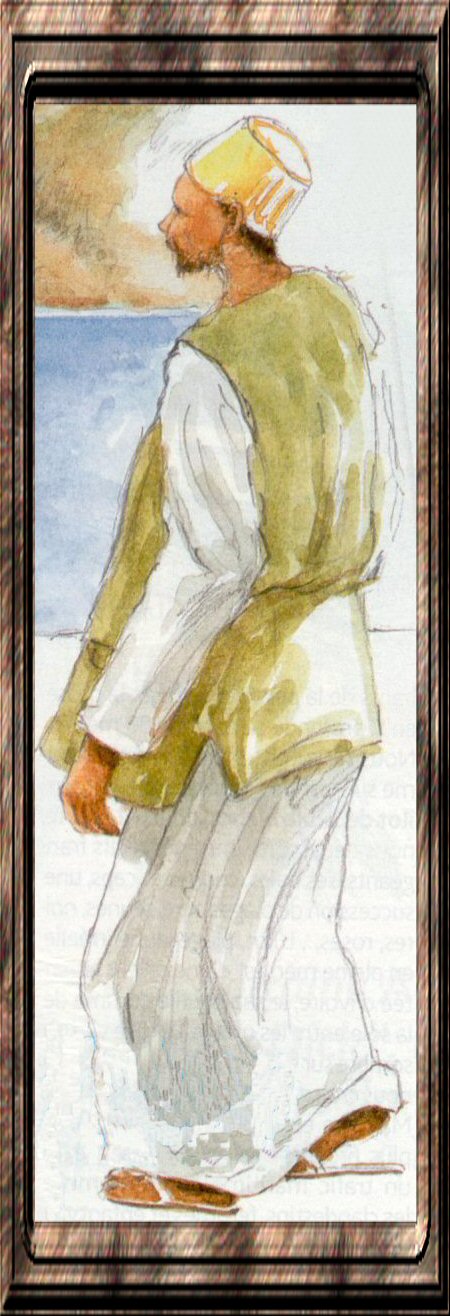The Mahoran Man |
||
| The Mahoran man is recognizable from his "koffia", a tarboosh-like headdress, generally white or finely embroidered, essentially worn in the mosque or during religious ceremonies, or even daily. The Mahoran man can customarily get married to a woman, be she divorced or not, childless or not. That relationship serves in fact as a springboard for the great social consecration to which he aspires : marry a virgin girl during a Great Marriage. So, only so will he become a somebody, a respected notable. The Great Marriage comes to consecrate years of wandering during which the Mahoran Man searches for an identity through various experiences : study, learning of the ways of the world through peregrinations, successive marriages of no importance before the Today, things are changing very fast in Mayotte. With the rapid development of the island (socio-educational and road infrastructure expansion, accelerated town planning, craving for quick consumption despite the lack of money - longing for cars, motos, radio sets and new trendy clothes ...), traditions and rituals are put into question by the Mahoran himself - orality, respect for his elder and betters and for their words, ancestral rites which demand blind faith, no questionning, ... In fact, the young Mahoran man is now taking part in a "castration" process of the father, in wiping out the "original force" which has precisely made the strength of his culture (the past tense is used intentionally), of his life style, of his rituals. The eldest ones are "out of play" in relation to the realities of things. They still view the world as an abstract entity whereas Mayotte is on the move, whereas the medias, the internet, the "reality shows" bring daily to him other realities, sure, concrete, undeniable and far away from the ghostly world. The djinns are no longer frightening, except perhaps to the children. They have gradually lost their aura of the Bogeymen. The culture of devotion nurtured by the fear of the eldest, of the beyond and of the unknown, has begun to decline and to give way to an interrogation more intuitive but also more straightforward from life. The Cartesian "Je pense donc je suis" (ie I think therefore I am) has become "I see therefore I believe". It is certainly a risky way to deal with the complexity of the world, for manipulation is always possible, but the father does not propose anything to oppose to this approach; he himself being caught up with the wind of modernity. The today's young man, the tomorrow's man and the old man he will become is irremediably making his silent revolution. |
||





